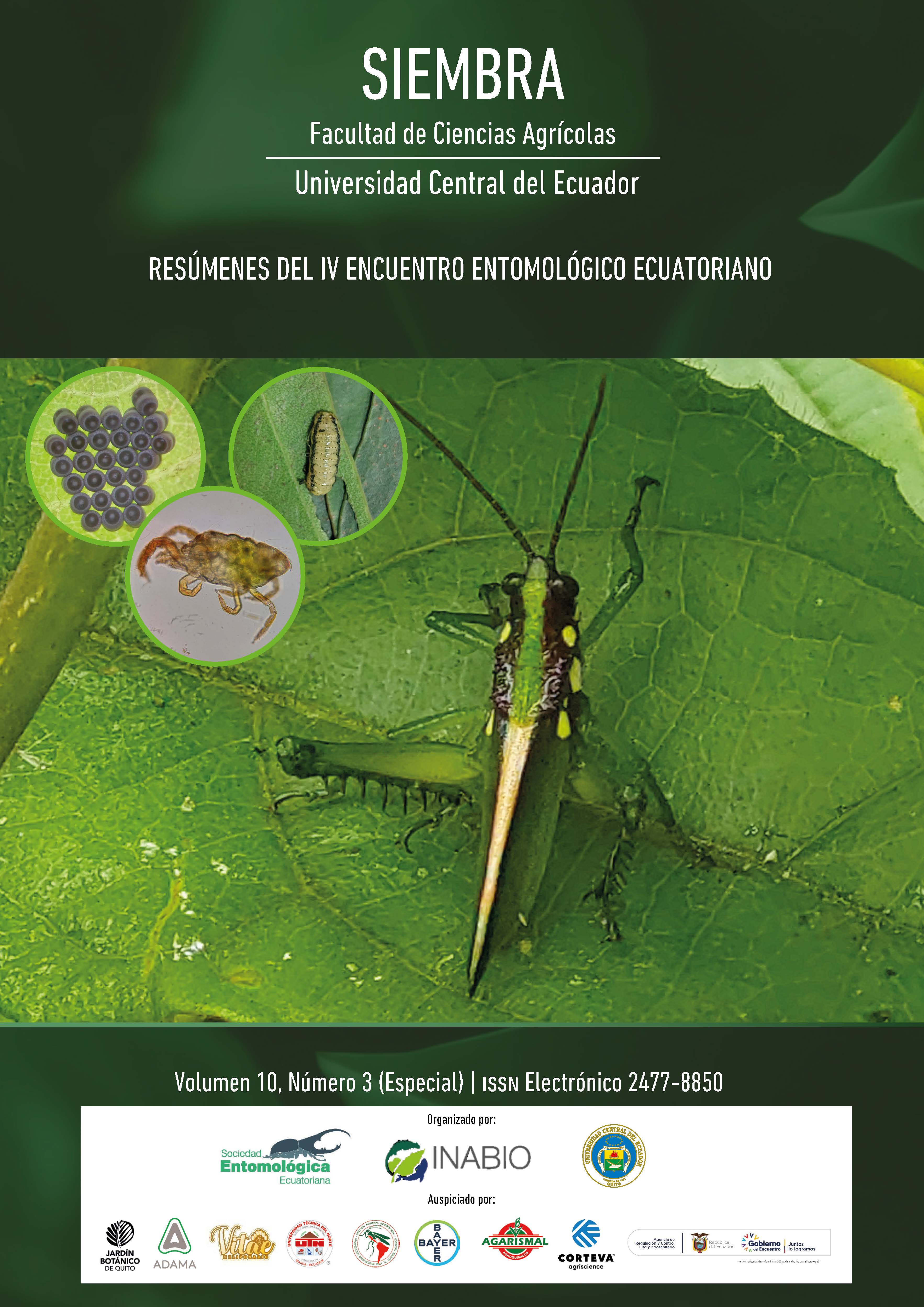ED009. El uso de la ciencia ciudadana para determinar la distribución y prevalencia de la hormiga argentina Linepithema humile (Hymenoptera: Formicidae) en Quito, Ecuador
Contenido principal del artículo
Resumen
Las especies invasoras son una seria amenaza para la biodiversidad nativa y el funcionamiento de los ecosistemas, y los invertebrados tienden a ser excepcionalmente buenos invasores a través de su capacidad para reproducirse y dispersarse fácilmente. Una especie invasora cosmopolita prevalente que prospera en entornos urbanos es la hormiga argentina (Linepithema humile; Mayr, 1868). L. humile fue documentado por primera vez en 2014 pero ha estado presente en el país desde muchos años antes. El objetivo de este estudio fue entender la distribución y prevalencia de L. humile encontrada dentro del Distrito Metropolitano de Quito (DMQ). Teniendo en cuenta que el período transcurrido desde su probable introducción es muy largo, planteamos la hipótesis de que la población estaría bien establecida y no esperábamos un aumento en la prevalencia de L. humile en toda su distribución. Durante tres años (2017-2019), utilizamos la ciencia ciudadana al reclutar estudiantes de dos universidades diferentes para tomar 535 muestras de 471 sitios en todo el DMQ. En total, L. humile constituía el 63,18 % de las especies colectadas, lo que sugiere que la especie domina la comunidad local de hormigas. Contrariamente a nuestras predicciones, la proporción de L. humile aumentó con el tiempo, del 48,96 % en 2017 al 67,37 % en 2019. Además, la proporción de viales “vacíos”, donde no se encontró hormigas en el sitio de muestreo, disminuyó con el tiempo (del 21,88 % al 14,03 %), lo que sugiere que L. humile incrementó su prevalencia en la comunidad y su abundancia y distribución. Futuros análisis incluirán un análisis espacial y la inclusión de nuevos datos para comprender mejor cómo la distribución de L. humile puede haber cambiado con el tiempo.
Descargas
Métricas
Detalles del artículo

Esta obra está bajo una licencia internacional Creative Commons Atribución-NoComercial 4.0.
Los autores que publican en Siembra conocen y aceptan las siguientes condiciones:
- Los autores retienen los derechos de copia (copyright) y ceden a la revista SIEMBRA el derecho de primera publicación del trabajo, bajo licencia Creative Commons Attribution License, que permite a terceros utilizar lo publicado siempre que hagan referencia al autor o autores del trabajo y a su publicación en esta revista.
![]() Esta obra está bajo una Licencia Creative Commons Reconocimiento-NoComercial 4.0 Internacional (CC BY-NC 4.0).
Esta obra está bajo una Licencia Creative Commons Reconocimiento-NoComercial 4.0 Internacional (CC BY-NC 4.0).
- Los autores conservan los derechos de autor y garantizan a la Revista Siembra el derecho de publicar el manuscrito a través de los canales que considere adecuados.
- Los autores pueden establecer por su cuenta acuerdos adicionales para la distribución no exclusiva de la versión de la obra publicada en la Revista Siembra, haciendo reconocimiento de su publicación inicial en la misma, como por ejemplo en repositorios institucionales.
Se autoriza a los autores a difundir sus trabajos electrónicamente una vez sea aceptado el manuscrito para su publicación.

